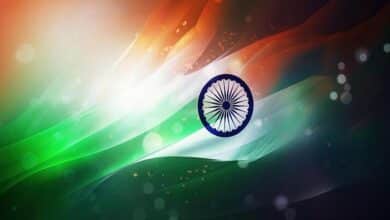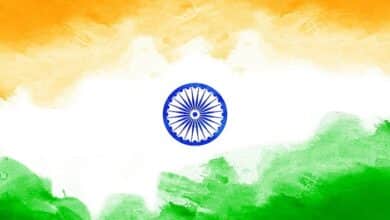The Role of a Flag Waver: Symbolism, Tradition, and Impact

The act of waving a flag holds deep meaning across many cultures and traditions. Whether it’s seen at sporting events, political rallies, or national holidays, a flag waver plays a vital role in bringing attention to a cause, celebrating a victory, or honoring a nation. This post will explore the role of the flag waver, the history of flag waving, and the various contexts in which flags are waved, highlighting the symbolism and importance they carry.
What is a Flag Waver?
A flag waver is an individual who waves a flag, often symbolizing allegiance, celebration, or support. This act is not limited to a single type of flag or event. It can range from waving national flags at parades to showing support for a political movement or sports team. The role of the flag waver is essential in conveying a message, and their actions often capture the emotional essence of the occasion. Whether in sports stadiums, protest marches, or official ceremonies, the person waving the flag becomes a focal point, symbolizing unity and pride.
The flag waver can be seen at the front lines of parades or standing in the crowd at an event, where their enthusiastic waving acts as a visual representation of the crowd’s emotions. From a simple cheer to a collective display of solidarity, the flag waver carries not just the flag, but the spirit of the people they represent.
The Historical Significance of Flag Waving
The act of flag waving has roots in ancient times, evolving from military banners to modern-day symbols of nations, groups, and ideologies. Early flag wavers used flags as tools to communicate, signal, and identify groups on the battlefield. Military commanders used flags to rally troops, mark positions, and signal orders.
As civilizations progressed, the symbolism of flags expanded beyond warfare. In the Middle Ages, flags became symbols of power, royalty, and nobility. By the 18th and 19th centuries, flags began representing nations, fostering national pride and unity. The flag waver, as a figure, evolved from a military symbol to a national or cultural icon, representing various causes, movements, and celebrations. This historical context adds depth to the act of waving a flag, transforming it from a mere gesture into a powerful cultural symbol.
The Symbolism Behind Flag Waving
The flag waver often embodies the values and beliefs associated with the flag they wave. For example, when a person waves the national flag of a country, they are not just displaying the fabric but also showing pride in their heritage, history, and collective identity. The colors, shapes, and symbols on the flag carry specific meanings that connect the flag waver to broader cultural and political themes.
In sports, a flag waver might signal support for a team or athlete, while in political rallies, flags can represent ideologies, movements, or calls for change. Each flag carries unique meanings, and the act of waving it serves as a statement of allegiance, unity, or support. The flag waver is, in essence, a messenger, using their gestures to broadcast sentiments that resonate with a larger community.
Flag Wavers in Sporting Events
One of the most iconic scenes of a flag waver in action occurs during sporting events, where fans wave flags to show support for their teams. The enthusiasm of a flag waver in this context is palpable and infectious. Whether it’s at a football match, the Olympics, or a local sports event, waving a flag signifies loyalty and passion for a team or athlete.
The use of flags at these events goes beyond decoration; they are integral to the fan experience. The flag waver becomes a visual symbol of the energy and excitement of the crowd. For example, during the Olympics, athletes and fans alike wave national flags to celebrate victories and promote national pride. For sports teams, a flag waver is often a part of the pre-game rituals, rallying the crowd and unifying them in their support. The act is a communal expression, transforming individual excitement into collective enthusiasm.
The Role of Flag Wavers in Political Movements
Throughout history, flag wavers have played pivotal roles in political movements. From the American Revolution to the civil rights movements, flags have served as symbols of resistance, hope, and change. Political groups often use flags as tools of visibility and unity, and those who wave them become key figures in these movements.
The flag waver in a political context stands for more than just support; they symbolize a stance on issues, whether in protest or in support of government policies. For example, waving a flag during a protest can signify dissent or a call for justice, while waving a flag at a political rally may signal allegiance to a particular cause or candidate. In this way, the flag waver becomes a representative of collective political will, helping to spread the message of a movement or cause.
The Impact of Flag Wavers in Cultural Celebrations
Flag waving is also an essential aspect of cultural celebrations around the world. Whether it’s during a national holiday like Independence Day, a festival, or a community event, the flag waver takes on a role that goes beyond simply holding a flag. They become a custodian of tradition, preserving cultural values and reinforcing community identity.
During parades or festivals, the flag waver’s actions help enhance the celebratory atmosphere. In many countries, national flags are proudly displayed during these events, signaling unity and patriotism. In this context, the flag waver is not only participating in a celebration but also honoring the culture, history, and traditions of their nation or community. Their role in these settings underscores the importance of flags in celebrating shared values and heritage.
Flag Wavers at Parades and Ceremonies
Flag waving is a traditional feature of parades and official ceremonies. During major events such as military parades, state functions, and national commemorations, flag wavers are often seen leading the procession or standing as symbols of respect and honor. In these ceremonies, the act of waving a flag serves as a tribute to those being honored, such as veterans, national heroes, or important cultural figures.
At these events, the flag waver represents not just themselves, but the collective spirit of the people. They embody the respect, admiration, and solemnity associated with the occasion. Their careful, deliberate waving of the flag is meant to evoke feelings of pride, remembrance, and national unity, making them a central figure in ceremonial settings.
The Evolution of Flag Waving in the Digital Age
With the rise of digital communication, the role of the flag waver has expanded into virtual spaces. Social media platforms now allow people to wave flags in digital forms, creating online movements and digital activism. Flag waving has transcended physical spaces and is now visible on profiles, in tweets, and in digital imagery shared globally.
This digital shift has made the act of flag waving even more powerful, as individuals can now show their support for causes and movements across the world in real-time. Digital flag wavers unite people across borders, creating virtual solidarity for political, social, and environmental causes. The flag waver of the digital age continues to be a powerful symbol of collective action and unity, echoing the traditions of the past while embracing the opportunities of modern communication.
Flag Waving and Its Psychological Impact
The psychological impact of flag waving can be profound. For both the flag waver and the onlookers, the act of waving a flag can invoke strong emotions, including pride, joy, or a sense of belonging. When individuals participate in this act, it fosters a feeling of connection to a larger group, whether it’s a nation, team, or cause. The flag waver helps create a sense of collective identity and shared experience.
The emotional effect of flag waving can be seen in the powerful moments at sports events when an athlete wins and waves the flag in victory or at a political rally when the crowd waves flags in solidarity. In these moments, the flag waver taps into the collective psyche of a group, sparking feelings of unity, purpose, and shared pride.
Conclusion
The flag waver is an important figure in both historical and modern contexts, symbolizing a connection to a larger group, culture, or cause. From sporting events to political movements, and from cultural celebrations to state ceremonies, the role of the flag waver remains a powerful way to convey unity, pride, and support.
As we move into the digital age, the act of waving a flag continues to evolve, taking on new forms while maintaining its core symbolism of solidarity and collective action. Whether in person or online, the flag waver serves as a reminder of the importance of community, tradition, and identity, carrying with them the pride and emotions of the people they represent.
FAQs
- What is a flag waver?
A flag waver is an individual who waves a flag to show support, pride, or solidarity with a cause, event, or nation. - Why is flag waving important in sports?
Flag waving in sports represents support for teams or athletes, unifying fans and symbolizing national pride during victories. - How has flag waving evolved in the digital age?
Flag waving has transitioned online, with people showing support through digital flags on social media platforms and digital activism.





